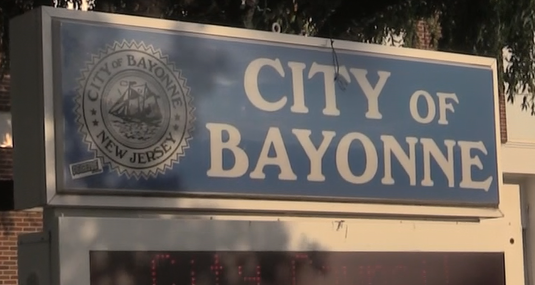The federal Surface Transportation Board (STB) held a virtual public meeting on the downtown Jersey City Sixth Street Embankment where many advocated for its preservation.

By Daniel Ulloa/Hudson County View
Federal Preservation Officer with the Surface Transportation Board Alan Tabchnik explained their role in overseeing the abandoned rail line by Conrail and they can allow it to go through.
“The board must comply with the National Environmental Policy Act or NEPA and Section 106 of the Historic Preservation Act,” he noted.
The formal abandonment and repurposing of Jersey City’s Sixth Street embankment process has been long. The embankment crosses downtown. They are going through a lengthy historical preservation process which began in 2008.
Tabchnik said STB is working with 29 advocacy environmental and transportation groups and stakeholders.
“Our consultation efforts are continuing not only with the 29 consulting parties but also with the larger community,” he said.
Tabchnik explained they have been negotiating a Memorandum Of Agreement (MOA) deal with Conrail for years. Under the current terms, Conrail would pay for developing educational material and signage and coordinate with other parties on mitigation issues.
“The preservation of the Harsimus Branch embankment is the most unifying issue among the citizens that I represent,” Ward E Councilman James Solomon noted.
“They hope for that the historic branch is preserved and there is public access and the environmental benefits of the urban forest that grown remains. We want to ensure Conrail is not awarded for improperly abandoning the rail line.”
Solomon also said nearby property owners would be adversely affected if it’s developed into private property.
“Listen to the overwhelming voice of downtown Jersey City … who speak and ask you to ensure its historic nature is preserved,” he advised.
“I cannot emphasize enough how deeply concerned we are of losing this historic structure,” Jersey City Department of Infrastructure Director Barkha Patel.
She wanted them to demand historic preservation from Conrail, also Patel noting the embankment is part of the Master Plan.
“The embankment deserves to be protected as a historic structure,” Patel argued.
She noted it helps mitigate the effects of climate change with the greenery on top.
“Local laws are not enough,” Patel said.
She noted the plan is for it to become a walking and bikeway corridor that will be part of the Essex Hudson Greenway, as well as an East Coast Greenway from Maine to Florida.
Patel said they wanted to be included in the process.
“We need the STB to take a strong stance in favor of its protection,” she argued.
“The city of Jersey City wanted to purchase it,” Embankment Coalition President Stephen Gucciardo explained, however, the STB needed to approve it.
“Conrail only applied for abandonment after the courts ruled STB still had jurisdiction,” he noted.
Gucciardo said STB can use its powers to prevent the sale. But they have not.
“The sale is unlawful. Is this the mission of the STB? To cancel its own authority?” he asked.
Gucciardo criticized the negotiated MOA terms.
“How will Conrail put the proposed signs on property they no longer own?” he asked.
“Deny the abandonment application. No action does more to protect the Harsimus Branch. Don’t reward Conrail,” Gucciardo declared.
“This MOA disrespects our state’s efforts to preserve and protect its resources.”
Harsimus Cove Association President Tom Monahan also voiced concerns.
“We’re here faced with the question of whether Conrail and the LLCs that unlawfully acquired the embankment are going to be rewarded,” he noted.
“I find the idea that signage and a website and the minimal preservation obligations … galling.”
He contained that STB should determine that Conrail cannot abandon it unless they arrange to preserve it.
Embankment Coalition Founder Maureen Crowley said it has been a 20-year process. She explained they raised money for the city to buy it, but then Conrail sold it to late developer Steve Hyman.
“This sale shocked us,” Crowley declared.
Crowley said they noted it was federally regulated, but, the legal process in the courts was lengthy. She also pointed out that the Jersey City Council passed a preservation plan.
“This process must respect maximum public participation,” Friends of Liberty Park President Sam Pesin began, also praising the natural public corridor plans.
“Urban people living in this crowded concrete place need public parks and mass transit. We must save the embankment for public use. We urge you to hold Conrail accountable for their unlawful sale. Your history sign proposal is a travesty.”
He said the MOA opens the door for urban development, which many do not want.
“I was the city attorney for Jersey City and dealt with these issues. A decade later, the fight continues,” said Bill Matsikoudis, corporation counsel under Mayor Jerramiah Healey.
“I just can’t imagine that the government … would allow this resource to be demolished. It would be the equivalent of an assault.”
Matsikoudis also claimed some said the greenery on top of the embankment help ease the heat in the city.
“The current suggestions in the MOA are not sufficient,” Embankment Coalition board member Jessica Constantine said.
“I hope the STB can consider adding more historic preservation language to the MOA.”
Additionally, Peter Delman accused the STB of being unresponsive in the past.
“We understand the agency is supposed to engage the public early. They did not do this,” he asserted.
Delman added a local housing authority project was not informed of the meeting, and the STB did not provide information in Spanish. He also did not like a 30-day comment period because it could strain volunteer-run organizations.
“The MOA does not mention the history of this project. The MOA should properly reflect Conrail’s action to circumvent the process. The STB is effectively erasing history,” Jersey City Historic Preservation Commission Officer Maggie O’Neil said.
“Jersey City is a dense urban area with a dire lack of green open spaces … It serves as a critical link in many local, regional, and even national greenway plans,” Bike JC President Ayla Schermer said.
“It serves as a critical link in many local, regional, and even national greenway plans.
Activist Eleana Little said access to green space is critical in Jersey City, while attorney Peter Pfohl, who represents the new owners of the property, called the process exhausting thus far.
“Seven public meetings have been held. No one has been excluded,” he argued, also claiming they wouldn’t demolish the blocks.
“No embankment removal is sought. Development of the embankment is controlled by the city and fully protects the public.”
Pfohl continued that the council has mandated that Blocks 2-6 become a park.
Tabchnik added that the public remarks will be incorporated into the MOA process. Once executed, the final MOA will be posted on their website.










